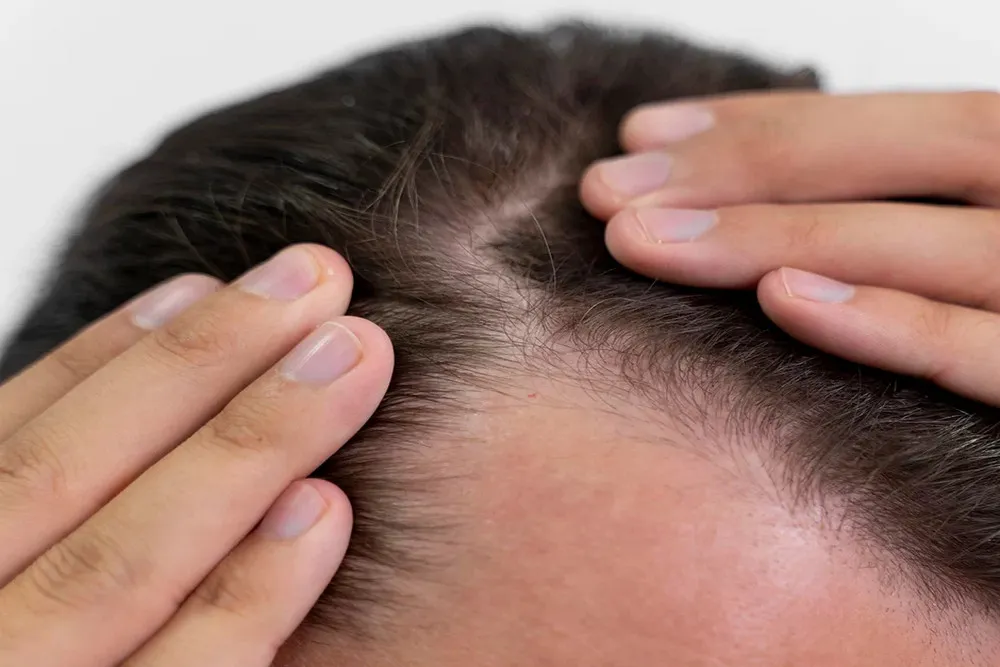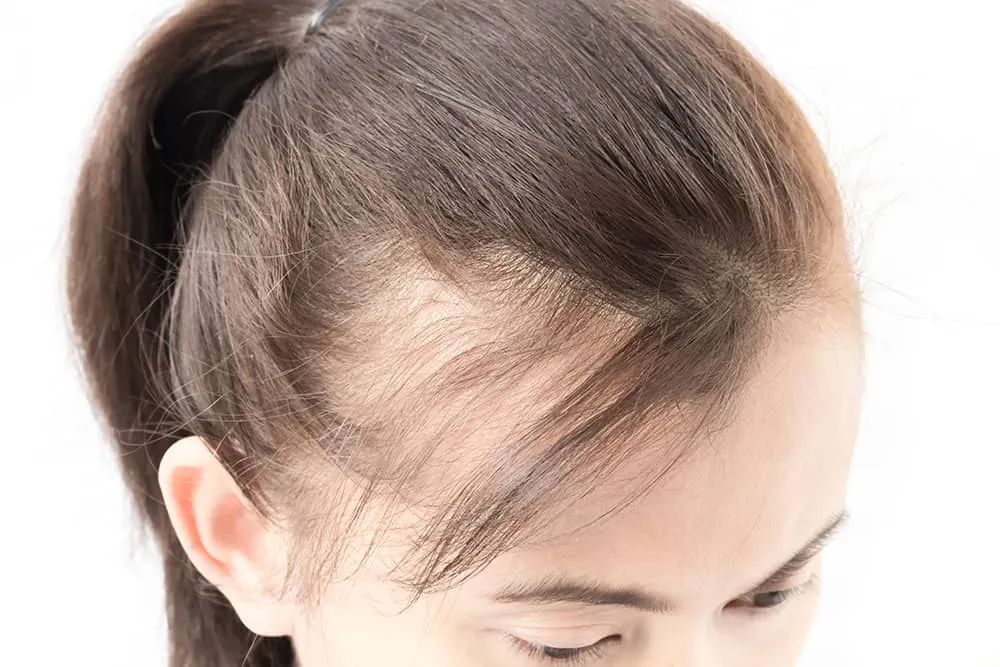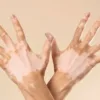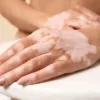Common Causes of Hair Loss and Solution
Introduction
Hair loss is a common concern that affects millions of people worldwide, regardless of age or gender. Losing hair can be emotionally distressing, impacting self-confidence and overall well-being. Whether it’s gradual thinning or sudden shedding, understanding the underlying causes of hair loss is the first step toward effective management.
This comprehensive guide explains the common causes of hair loss, explores science-backed solutions, and shares practical tips for regaining healthy, strong, and beautiful hair naturally.
What Is Hair Loss?
Hair loss, medically known as alopecia, occurs when hair falls out from areas where it normally grows, particularly the scalp. It can be temporary or permanent and may affect both men and women.
Hair loss can appear in different forms:
- Gradual thinning on top of the head – the most common type due to aging.
- Patchy bald spots – caused by autoimmune reactions.
- Sudden hair shedding – often linked to stress, illness, or hormonal changes.
- Full-body hair loss – can result from certain medications or medical treatments.
Understanding which type of hair loss you’re experiencing helps determine the most effective treatment.
The Hair Growth Cycle Explained
To understand hair loss, you must first know how hair grows. Hair follicles go through three main stages:
- Anagen (Growth phase): Hair grows actively for 2–7 years.
- Catagen (Transition phase): Hair stops growing and detaches from the blood supply (about 2–3 weeks).
- Telogen (Resting phase): The follicle rests for 2–4 months before the hair falls out naturally and a new cycle begins.
When this natural cycle is disrupted due to genetics, hormones, or environmental stress excessive hair loss begins.

1. Genetic Factors: Hereditary Hair Loss
The most common cause of hair loss is genetics, known as androgenetic alopecia. It affects both men and women but presents differently:
- In men: gradual thinning at the crown and receding hairline.
- In women: overall thinning without bald patches.
This type of hair loss is linked to a genetic sensitivity to DHT (dihydrotestosterone) a hormone that weakens hair follicles, causing them to shrink and eventually stop producing hair.
Solutions:
- Minoxidil (Rogaine): FDA-approved topical treatment that stimulates growth.
- DHT-blocking shampoos or supplements: Contain ingredients like saw palmetto or pumpkin seed oil.
- Laser therapy: Promotes follicle activity and blood circulation.
- Hair oils: Natural blends containing castor, rosemary, and jojoba oil can strengthen follicles and reduce shedding.
2. Hormonal Imbalances
Hormonal fluctuations are another major reason for hair loss. Conditions like pregnancy, menopause, thyroid disorders, and PCOS (Polycystic Ovary Syndrome) can cause excessive shedding.
Solutions:
- Hormone regulation: Consult a doctor for thyroid or hormonal imbalance tests.
- Balanced diet: Include zinc, iron, and vitamin D-rich foods.
- Natural hair oils: Formulas with argan oil or coconut oil help nourish follicles during hormonal shifts.
- Gentle hair care: Avoid harsh shampoos and tight hairstyles that stress the scalp.
3. Stress-Induced Hair Loss
Chronic stress can push large numbers of follicles into the resting phase (telogen effluvium), resulting in noticeable shedding a few months later. Emotional distress and anxiety can also worsen other hair loss conditions.
Solutions:
- Relaxation techniques: Meditation, yoga, and regular exercise.
- Scalp massage: Improves blood flow and calms the nervous system.
- Nutrient-rich hair oils: Oils with lavender, rosemary, or amla can reduce stress and stimulate regrowth.
- Sleep hygiene: Aim for 7–8 hours of quality sleep to balance stress hormones.
4. Nutritional Deficiencies
Your hair needs essential vitamins and minerals to stay healthy. Lack of nutrients like iron, zinc, vitamin D, B12, and protein can weaken follicles and lead to hair loss.
Solutions:
- Protein intake: Include eggs, lentils, nuts, and fish in your diet.
- Iron and zinc supplements: Prevent deficiency-related hair thinning.
- Vitamin D: Supports follicle cycling get sunlight or supplements.
- Biotin and Omega-3: Strengthen hair from root to tip.
- Topical nourishment: Use oils rich in castor oil, coconut oil, and vitamin E for added nutrition.
5. Hair Care Practices and Chemical Damage
Overuse of hair dyes, heat styling, or chemical treatments can strip the hair of natural oils, causing dryness, breakage, and hair loss.
Solutions:
- Limit heat tools: Use them at low temperatures.
- Avoid harsh chemicals: Opt for sulfate-free shampoos.
- Moisturizing hair oils: Apply argan or olive oil weekly for deep hydration.
- Regular trims: Remove split ends to maintain healthy growth.
6. Medical Conditions Causing Hair Loss
Certain health problems can directly or indirectly lead to hair loss, including:
- Alopecia areata: Autoimmune disease causing patchy hair loss.
- Thyroid disorders: Affect hair texture and growth.
- Diabetes and lupus: Can reduce blood supply to follicles.
- Scalp infections: Fungal infections like ringworm cause scaling and patchy bald spots.
Solutions:
- Medical diagnosis: Always consult a dermatologist or endocrinologist.
- Prescription treatments: Corticosteroids or topical immunotherapy for autoimmune causes.
- Natural healing: Use anti-inflammatory oils like tea tree or neem to maintain scalp health.
7. Environmental and Seasonal Factors
Pollution, UV radiation, and harsh weather conditions can weaken hair shafts and damage follicles. Excessive exposure to sunlight or chlorinated water also contributes to hair loss.
Solutions:
- Protective hairstyles: Reduce exposure to environmental stressors.
- Use natural oils: Coconut and almond oils form a barrier against pollutants.
- Wear a hat or scarf: Protects from sun and dust.
- Hydration: Keep your scalp and body hydrated to prevent dryness.
8. The Power of Hair Oils
Natural hair oils have been used for centuries to promote growth, strengthen roots, and prevent premature hair loss. Their therapeutic properties nourish the scalp, enhance circulation, and support follicle regeneration.
Best Oils for Hair Loss:
- Castor Oil: Boosts blood flow and strengthens roots.
- Coconut Oil: Deeply moisturizes and prevents protein loss.
- Rosemary Oil: Scientifically proven to stimulate growth comparable to Minoxidil.
- Pumpkin Seed Oil: Blocks DHT naturally.
- Amla Oil: Rich in antioxidants and vitamin C for stronger strands.
How to Use:
Warm the oil slightly, massage it into your scalp using circular motions, leave it overnight or for at least 2–3 hours, then wash it off with a mild shampoo.
Natural and Lifestyle Solutions
- Eat a balanced diet rich in proteins, vitamins, and minerals.
- Avoid tight hairstyles that pull on roots.
- Drink plenty of water for scalp hydration.
- Exercise regularly to improve circulation.
- Use herbal remedies like aloe vera, onion juice, or fenugreek masks for scalp nourishment.
- Be consistent with a scalp care routine that includes gentle exfoliation and oiling.
Myths and Facts About Hair Loss
Myth 1: Hair loss only affects men.
Fact: Over 40% of women experience noticeable hair thinning in their lifetime.
Myth 2: Frequent washing causes hair loss.
Fact: Washing removes dirt and excess oil poor hygiene can worsen hair fall.
Myth 3: Cutting hair makes it grow faster.
Fact: Hair growth occurs at the follicle level trimming only reduces split ends.
Myth 4: Hairs loss is always permanent.
Fact: Many types, especially stress-induced and nutritional, are reversible with proper care.
Emotional Impact of Hair Loss
Hair is deeply tied to personal identity and confidence. Experiencing can lead to anxiety, depression, and social withdrawal. Remember, addressing hair loss early both medically and emotionallycan make recovery smoother.
Joining support groups, talking to professionals, and using self-care rituals like oil massages or aromatherapy can greatly improve mental well-being during this journey.
Future of Hair Loss Treatment
Modern science is rapidly advancing in the field of hair restoration. Promising new treatments include:
- Stem cell therapy for follicle regeneration.
- JAK inhibitors for autoimmune-related hair loss.
- Platelet-Rich Plasma (PRP) therapy to boost growth.
- AI-based scalp analysis for personalized treatment plans.
The combination of technology, nutrition, and natural care is making hair los more manageable than ever before.
FAQs About Hair Loss
1. Is hair loss permanent?
Not always. Many forms of hair los are temporary and reversible with proper care and treatment.
2. What vitamins are best for hair growth?
Vitamin D, B12, zinc, biotin, and iron are essential for strong, healthy hair.
3. Can stress really cause hair loss?
Yes, high stress levels can disrupt the hair growth cycle, causing telogen effluvium a temporary form of shedding.
4. What shampoo is best for hair loss?
Use sulfate-free, nourishing shampoos enriched with natural oils, keratin, or caffeine to strengthen roots.
5. How long does it take to see results from treatment?
Consistent use of natural oils and supplements may show improvement within 8–12 weeks.
Conclusion
Hair can be a distressing experience, but it’s not the end of your hair journey. By identifying the underlying cause whether it’s genetics, stress, hormonal imbalance, or poor nutrition—you can take proactive steps toward recovery.
Adopting a healthy lifestyle, maintaining a nutrient-rich diet, and using natural treatments such as herbal remedies can make a significant difference. With consistency, patience, and the right care, you can restore your hair’s vitality and confidence naturally and beautifully.growth.









Add comment